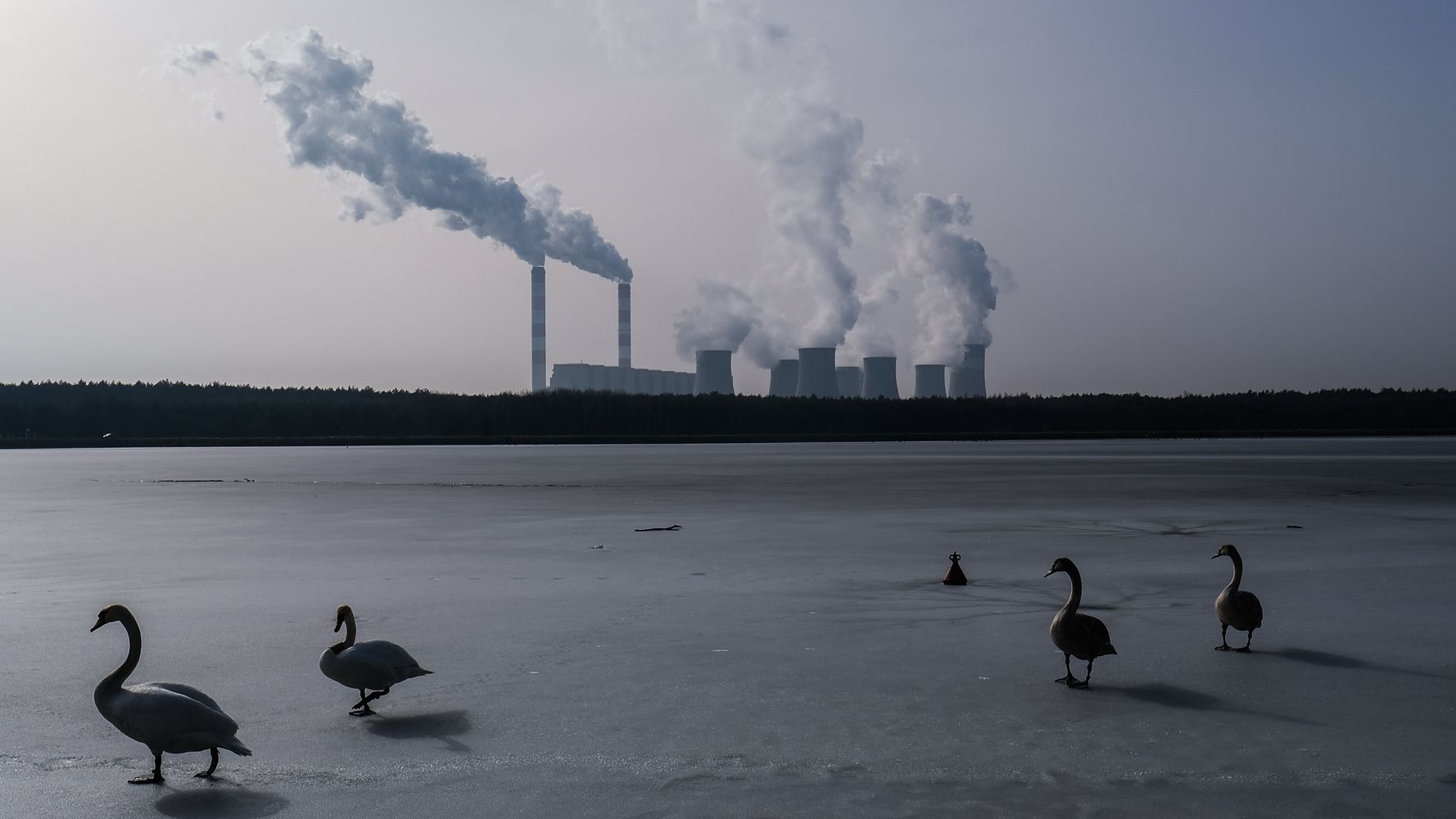[ad_1]
Before COVID-19, many countries started slashing emissions, but those reductions require a tenfold increase to keep warming in a relatively safe range, a new study has found.
From 2016 through 2019, 64 countries ― including most wealthy nations and one-third of the middle-income bracket ― slashed roughly 160 million metric tons of carbon dioxide per year, thanks to a slate of roughly 2,000 new climate laws worldwide.
Keeping the planet from warming to a maximum of 1.8 Celsius above preindustrial levels requires multiplying those cuts by 10, to roughly 2 billion metric tons per year, according to research published Tuesday in the peer-reviewed journal Nature Climate Change. The planet is already 1.1 C hotter than before humans started burning fossil fuels en masse.
The findings come at a turning point, when the world is gearing up to recover from the COVID-19 pandemic, which sent emissions in 2020 tumbling by an unprecedented 7% compared to 2019 levels. But as vaccines and public health measures allow economies to reopen and countries seek to restore their fortunes and quell social unrest, scientists fear an embrace of short-term fossil fuel use.
Yet Corinne Le Quéré, the University of East Anglia professor who led the analysis, said the findings should offer a hopeful message to policymakers.
“On the one hand, it’s positive because there is action, the cuts in emissions have been related to policies on climate and energy ― so we see movement, we see evolution, and we see cuts delivering,†she said. “On the other hand, it’s really not at the right scale.â€
In the four years preceding the pandemic, countries such as Japan, Mexico and the United Kingdom slashed emissions significantly. Even China, the world’s top emitter, saw its emissions grow at a rate of 0.4% per year during that period, compared to 6.2% from 2011 to 2015.

Yet some rich countries saw emissions climb during the years after the 2015 Paris agreement was signed, including Australia and Canada. The United States, the world’s No. 2 source of emissions and largest emitter historically, and the European Union saw reductions occur at a much slower rate than necessary. The U.S. saw emissions drop 0.7% from 2016 to 2019 compared to the period from 2011 to 2015. The EU’s pollution fell 0.9% during that same period.
The analysis, which used country data from the United Nations and the Global Carbon Project, did not account for increases in other heat-trapping gases, such as methane. Methane is a key ingredient in the natural gas that countries like the U.S. are producing at a rapid clip and is more potent than CO2 over a shorter period of time in the atmosphere.
The research comes as the world gears up for a virtual climate summit in the U.S. next month, part of the new Biden administration’s bid to reclaim its country’s mantle of leadership following former President Donald Trump’s widely criticized exit from global negotiations over emissions. It also comes ahead of November’s next international climate summit in Glasgow, Scotland, where countries are set to unveil new pledges to cut emissions.
There are few hopeful signs on the horizon. This week, a U.N. analysis of countries’ carbon-cutting goals ahead of the Glasgow conference found that the combined effort would put the world on a path to slash emissions just 1% by 2030 compared to 2010 levels. Scientists say emissions need to fall by roughly 50% during that period to keep warming from exceeding 2 degrees Celsius.
Likewise, the International Energy Agency this week said emissions from energy use fell 5.8% globally last year amid the pandemic, but warned that “CO2 emissions will increase significantly this year.â€
“What happens to energy demand and emissions in 2021 and beyond will depend on how much emphasis governments put on clean energy transitions in their efforts to boost their economies in the coming months,†the Paris-based nonprofit said in its latest report. “Avoiding a rebound in emissions requires rapid structural changes in how we use and produce energy.â€
Few countries have adopted measures specifically limiting fossil fuel use as part of government-sponsored economic recovery schemes. Those that have are largely limited to northern Europe: Denmark, France, Germany and the U.K., along with the EU overall.
Still, Le Quéré said she’s optimistic that her findings, plus the newfound appreciation of how warming will only amplify global hardship and disease like COVID-19, may encourage countries to step up their ambitions this year.
“It might be encouraging that the COVID-19 crisis has kind of hidden the small but definite progress that we were making in tackling climate change,†she said. “Now we can highlight those numbers and say, ‘Look, they’re 10 times too small and there are all these countries that increased emissions, but we know how to do cuts while promoting healthy economies.’â€
Calling all HuffPost superfans!
Sign up for membership to become a founding member and help shape HuffPost’s next chapter
[ad_2]
Source link





